When comparing two of the premium brands' most elegant and performance-oriented wagon offerings, the Audi A5 Avant and the BMW 3er Touring stand out not only for their aesthetics but also for their robust engineering and innovative technologies. Let's delve deeper into what these vehicles offer in terms of performance, innovation, and overall practicality.
Audi A5 Avant vs BMW 3 Series Touring – Performance, range & efficiency compared
Two cars, one duel: Audi A5 Avant meets BMW 3 Series Touring.
Which one wins in performance, efficiency and value for money? Find out now!
Design and Dimensions
The Audi A5 Avant boasts a sleek and contemporary design that seamlessly blends form with function. With a length of 4829 mm and a width of 1860 mm, its presence on the road is commanding. The striking silhouette and distinctive LED headlights contribute to its modern flair, making it an appealing option for those who prioritize style.
In contrast, the BMW 3er Touring, with dimensions ranging from 4713 mm to 4801 mm, complements its athletic heritage with a more pronounced front fascia and a slightly more aggressive stance. Its width, varying between 1827 mm and 1903 mm, enhances stability. Both vehicles feature a five-door layout, making accessibility easy for all passengers.
Performance Metrics
Under the hood, the A5 Avant offers a variety of engine options, including diesel and petrol variants. The most powerful configuration is a 367 HP petrol option, capable of accelerating from 0-100 km/h in just 4.5 seconds. Additionally, the A5’s all-wheel-drive capabilities ensure robust traction and stability, with a maximum speed reaching 250 km/h.
The BMW 3er Touring matches performance with its diverse engine choices, featuring combustion engines, mild hybrids, and plug-in hybrids. Its top-performing petrol engine generates 374 HP, allowing for an impressive 0-100 km/h time of just 3.6 seconds. With rear-wheel and all-wheel-drive options, the 3er Touring can achieve a maximum speed of 250 km/h as well.
Efficiency and Economy
Fuel efficiency is a key consideration for any buyer, and both models respond well to this requirement. The Audi A5 Avant shows consumption figures ranging from 4.8 to 7.5 L/100 km, depending on selected powertrains, providing commendable efficiency for its power output.
Comparatively, the BMW 3er Touring shines with its hybrid options, offering consumption rates as low as 0.9 L/100 km in electric mode. This model provides an electric range of up to 96 km, which is noteworthy for those embracing hybrid technologies.
Cargo and Interior Comfort
Practicality in the cabin is crucial for a vehicle of this class. The A5 Avant offers a trunk capacity of 448 to 476 liters, ensuring ample space for luggage and other gear. The interior is meticulously crafted with high-quality materials, providing a luxurious and comfortable driving environment for four passengers.
On the other hand, the BMW 3er Touring leads in cargo space with a generous 500 liters. Its thoughtfully designed interior comfortably accommodates five passengers, delivering premium comfort with an array of technological innovations. Both brands emphasize user-friendly infotainment systems and high-grade finishes, providing an unparalleled driving experience.
Innovative Technologies
Both the Audi A5 Avant and BMW 3er Touring are laden with cutting-edge technology. The A5 Avant features Audi's advanced MMI infotainment system, providing seamless connectivity and intuitive interface functionality. It also incorporates several smart driver-assistance systems designed to enhance safety on the road.
Similarly, the BMW 3er Touring does not fall short on technology, offering the latest iDrive system that includes a high-resolution display and voice controls. Active safety features such as lane assist and adaptive cruise control make this vehicle a tech-savvy option for drivers seeking peace of mind on their journeys.
Conclusion
Ultimately, choosing between the Audi A5 Avant and the BMW 3er Touring comes down to individual preferences regarding design, performance, and technology. Both vehicles provide exceptional quality and versatility, making them ideal companions for those who cherish both aesthetics and performance in their daily drives. As the automotive market continues to evolve, these models stand out by integrating advanced technologies without compromising their legacy of excellence.
Here’s where it gets real: The technical differences in detail
Costs and Efficiency:
Price and efficiency are key factors when choosing a car – and this is often where the real differences emerge.
Audi A5 Avant has a hardly perceptible advantage in terms of price – it starts at 40200 £, while the BMW 3 Series Touring costs 41100 £. That’s a price difference of around 900 £.
Fuel consumption also shows a difference: Audi A5 Avant manages with 2.10 L and is therefore slightly more efficient than the BMW 3 Series Touring with 2.50 L. The difference is about 0.40 L per 100 km.
As for range, the Audi A5 Avant performs somewhat better – achieving up to 108 km, about 11 km more than the BMW 3 Series Touring.
Engine and Performance:
Under the bonnet, it becomes clear which model is tuned for sportiness and which one takes the lead when you hit the accelerator.
When it comes to engine power, the BMW 3 Series Touring has a distinct edge – offering 550 HP compared to 367 HP. That’s roughly 183 HP more horsepower.
In acceleration from 0 to 100 km/h, the BMW 3 Series Touring is distinct quicker – completing the sprint in 3.50 s, while the Audi A5 Avant takes 4.50 s. That’s about 1 s faster.
In terms of top speed, the BMW 3 Series Touring performs a bit better – reaching 300 km/h, while the Audi A5 Avant tops out at 250 km/h. The difference is around 50 km/h.
There’s also a difference in torque: BMW 3 Series Touring pulls noticeable stronger with 700 Nm compared to 550 Nm. That’s about 150 Nm difference.
Space and Everyday Use:
Whether family car or daily driver – which one offers more room, flexibility and comfort?
Seats: BMW 3 Series Touring offers slightly more seating capacity – 5 vs 4.
In curb weight, BMW 3 Series Touring is minimal lighter – 1650 kg compared to 1785 kg. The difference is around 135 kg.
In terms of boot space, the BMW 3 Series Touring offers slight more room – 500 L compared to 476 L. That’s a difference of about 24 L.
In maximum load capacity, the BMW 3 Series Touring performs slight better – up to 1510 L, which is about 86 L more than the Audi A5 Avant.
When it comes to payload, Audi A5 Avant hardly perceptible takes the win – 535 kg compared to 520 kg. That’s a difference of about 15 kg.
Who wins the race?
The BMW 3 Series Touring proves to be is largely superior and therefore becomes our DriveDuel Champion!
BMW 3 Series Touring is the better all-rounder in this comparison.
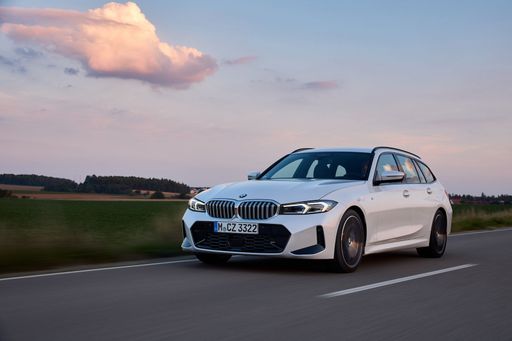 @ BMW Group Press
@ BMW Group Press
BMW 3 Series Touring
Audi A5 Avant
The Audi A5 Avant combines striking design with practicality, making it an attractive choice for those who value style and functionality in equal measure. Its spacious interior offers a luxurious experience, while the advanced technology enhances both comfort and safety on the road. With a performance-oriented engine lineup, the A5 Avant delivers an exhilarating driving experience that perfectly complements its elegant aesthetics.
details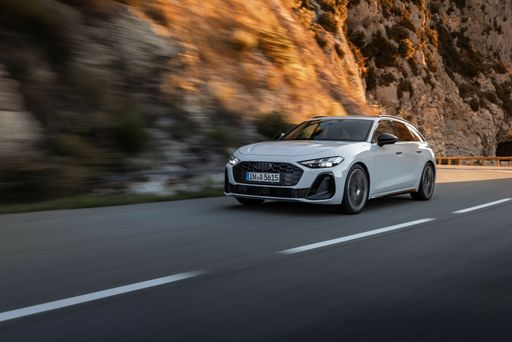 @ Audi AG
@ Audi AG
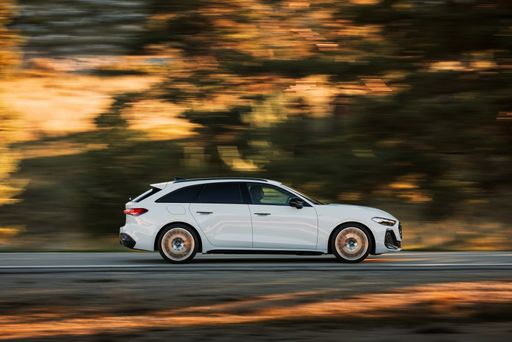 @ Audi AG
@ Audi AG
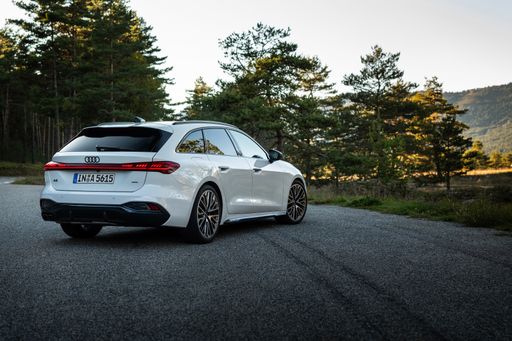 @ Audi AG
@ Audi AG
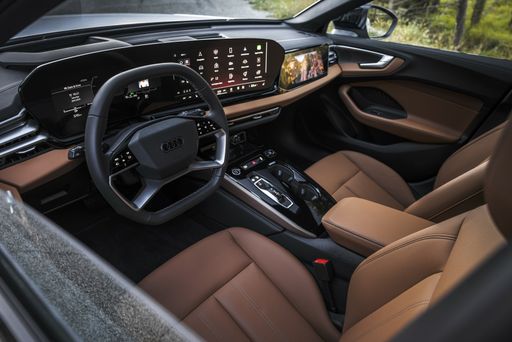 @ Audi AG
@ Audi AG
BMW 3 Series Touring
The BMW 3 Series Touring combines dynamic performance with practical versatility, making it an ideal choice for both spirited drives and everyday use. Its elegant design is complemented by a spacious interior, offering ample room for passengers and luggage alike. Cutting-edge technology enhances the driving experience, ensuring comfort and convenience on every journey.
details @ BMW Group Press
@ BMW Group Press
 @ BMW Group Press
@ BMW Group Press
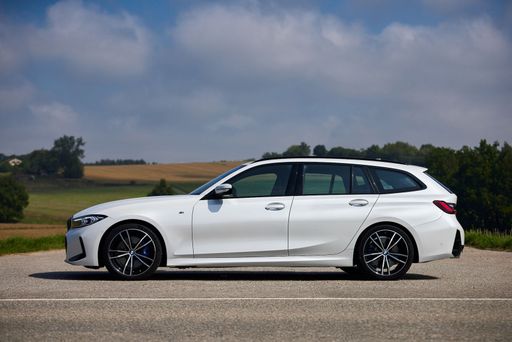 @ BMW Group Press
@ BMW Group Press
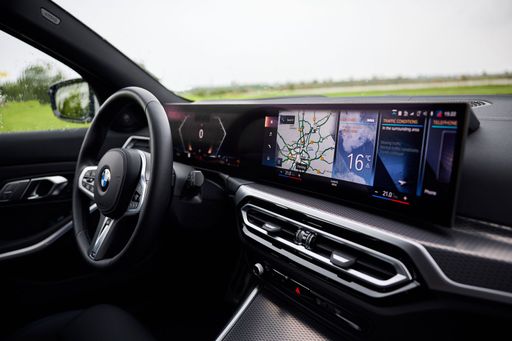 @ BMW Group Press
@ BMW Group Press
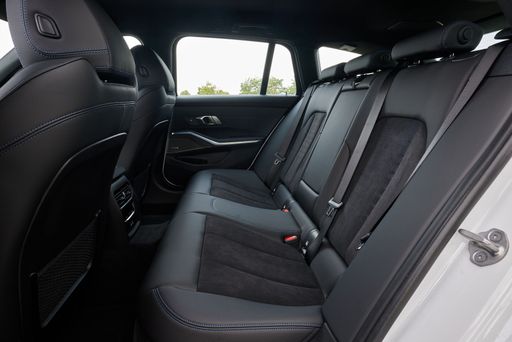 @ BMW Group Press
@ BMW Group Press
 @ Audi AG
@ Audi AG
|
 @ BMW Group Press
@ BMW Group Press
|
|
|
|
Costs and Consumption |
|
|---|---|
|
Price
40200 - 70000 £
|
Price
41100 - 131100 £
|
|
Consumption L/100km
2.1 - 7.7 L
|
Consumption L/100km
2.5 - 10.5 L
|
|
Consumption kWh/100km
-
|
Consumption kWh/100km
-
|
|
Electric Range
104 - 108 km
|
Electric Range
91 - 97 km
|
|
Battery Capacity
20.70 kWh
|
Battery Capacity
19.50 kWh
|
|
co2
47 - 175 g/km
|
co2
57 - 238 g/km
|
|
Fuel tank capacity
46 - 60 L
|
Fuel tank capacity
40 - 59 L
|
Dimensions and Body |
|
|---|---|
|
Body Type
Estate
|
Body Type
Estate
|
|
Seats
4
|
Seats
5
|
|
Doors
5
|
Doors
5
|
|
Curb weight
1785 - 2185 kg
|
Curb weight
1650 - 2025 kg
|
|
Trunk capacity
361 - 476 L
|
Trunk capacity
410 - 500 L
|
|
Length
4829 - 4835 mm
|
Length
4713 - 4801 mm
|
|
Width
1860 mm
|
Width
1827 - 1918 mm
|
|
Height
1444 - 1460 mm
|
Height
1440 - 1448 mm
|
|
Max trunk capacity
1306 - 1424 L
|
Max trunk capacity
1420 - 1510 L
|
|
Payload
480 - 535 kg
|
Payload
405 - 520 kg
|
Engine and Performance |
|
|---|---|
|
Engine Type
Plugin Hybrid, Petrol, Diesel MHEV, Petrol MHEV
|
Engine Type
Diesel MHEV, Petrol, Petrol MHEV, Plugin Hybrid
|
|
Transmission
Automatic
|
Transmission
Automatic
|
|
Transmission Detail
Dual-Clutch Automatic
|
Transmission Detail
Automatic Gearbox
|
|
Drive Type
All-Wheel Drive, Front-Wheel Drive
|
Drive Type
Rear-Wheel Drive, All-Wheel Drive
|
|
Power HP
150 - 367 HP
|
Power HP
150 - 550 HP
|
|
Acceleration 0-100km/h
4.5 - 9.8 s
|
Acceleration 0-100km/h
3.5 - 8.8 s
|
|
Max Speed
214 - 250 km/h
|
Max Speed
213 - 300 km/h
|
|
Torque
280 - 550 Nm
|
Torque
250 - 700 Nm
|
|
Number of Cylinders
4 - 6
|
Number of Cylinders
4 - 6
|
|
Power kW
110 - 270 kW
|
Power kW
110 - 405 kW
|
|
Engine capacity
1968 - 2995 cm3
|
Engine capacity
1995 - 2998 cm3
|
General |
|
|---|---|
|
Model Year
2025
|
Model Year
2024 - 2025
|
|
CO2 Efficiency Class
B, E, F, D
|
CO2 Efficiency Class
D, E, F, G, B
|
|
Brand
Audi
|
Brand
BMW
|
What drive types are available for the Audi A5 Avant?
The Audi A5 Avant is offered with All-Wheel Drive or Front-Wheel Drive.
The prices and data displayed are estimates based on German list prices and may vary by country. This information is not legally binding.
